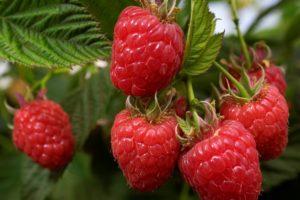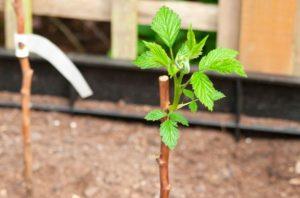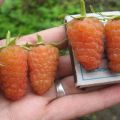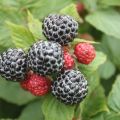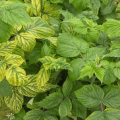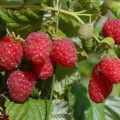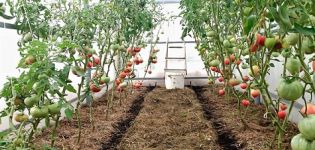Description and yield of Taganka raspberries, planting and care
According to the description of Taganka raspberry, this plant is distinguished by excellent productivity and yields tasty fruits. To achieve success in growing a crop, it is worthwhile to carry out planting work correctly and provide it with comprehensive care. It includes timely watering, weeding, pruning of the plant. It is definitely worth protecting the culture from diseases and parasites.
Description and characteristics of Taganka raspberries
This is a remontant, late-ripening variety of raspberries, which reaches a height of 2 meters. The culture is characterized by thick brown shoots. Branches are covered with large dark green leaves. Many small purple thorns are considered a characteristic feature of the culture. 20-30 fruits appear on the branches, which often leads to breakages.
The berries are very large. Their weight is 6-8 grams. The fruits are characterized by a conical shape and a rounded top. They have a rich scarlet hue. The yield from one bush reaches 5 kilograms.
Advantages and disadvantages of the variety
The main advantages of culture include the following:
- good frost resistance;
- high productivity;
- soft thorns;
- large fruits;
- resistance to diseases and parasites.
At the same time, the plant also has certain disadvantages. These include:
- weak resistance to drought;
- short shelf life.
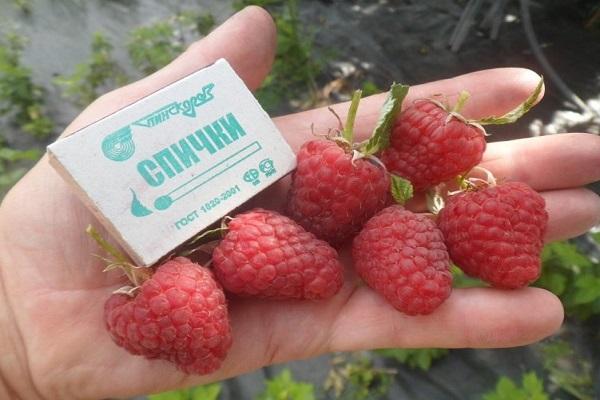
How to properly grow raspberries
To achieve success in growing a crop, it is worth planting correctly..
Site selection
For raspberries of this variety, an illuminated area is well suited, which is reliably protected from draft and wind. This can be near a wall or building. Raspberries are best planted in the south or southwest. A loose and soft soil is suitable for a plant, which passes moisture and air well.
Preparation of planting material
Before buying a seedling, it is worth examining the condition of its roots. They should not have any mechanical damage or symptoms of disease. Before planting, it is recommended to soak the culture in water or a growth stimulator. It is also worth dipping the roots in a clay mash.
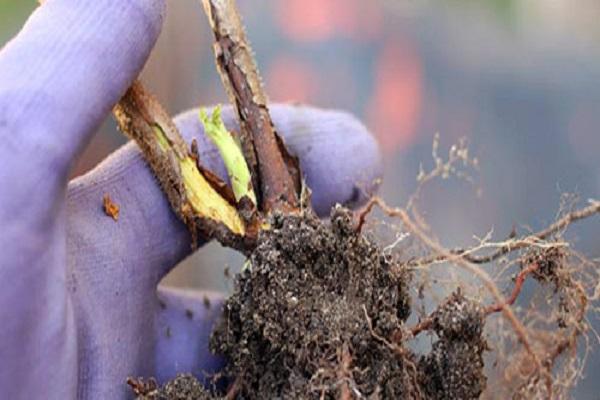
Landing scheme
In order for raspberries to take root well, it is worth following the following planting rules:
- A trench is suitable for a plant, which has a width of 40-50 centimeters. The distance between bushes should be at least 1 meter. It is worth observing an interval of 2 meters between the rows.
- It is recommended to sprinkle the trench by a third with a composition containing fertilizers.To do this, per 1 square meter it is worth taking 10 kilograms of humus, 200 grams of superphosphate, 120 grams of potassium sulfate.
- The plant should be placed on a mound and carefully spread the roots.
- Sprinkle the bushes with soil and tamp.
- It is important to ensure that the root collar is above the soil surface.
- After planting, 7-10 liters of water are poured under each bush.
- Cover the trunk circle with peat or humus. The thickness of this layer should be 5-7 centimeters.
Plant care rules
The plant is allowed to grow in the Kuban, in the Moscow region and in other regions. To get a bountiful harvest, raspberries should be well cared for.
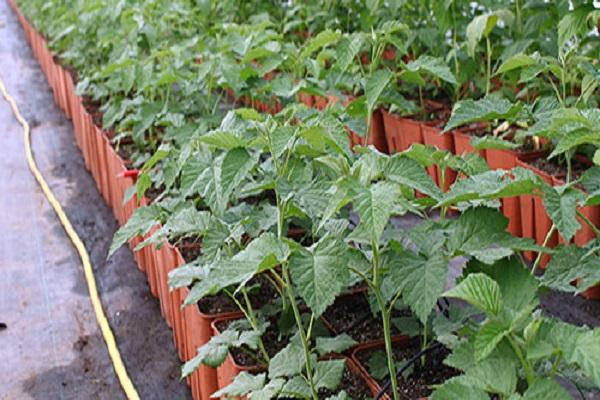
Watering, pruning and tying
Taganka badly perceives stagnant fluid. However, it is recommended to water it regularly. This is especially true during fruit formation. With a moisture deficit, the quality and quantity of fruits decreases. Raspberries should be watered 2-3 times a week. This is done in the morning and evening.
After harvesting, the bushes are pruned. It is recommended to do this flush with the ground surface. Shoots left over for the winter may freeze. At the same time, the roots under a layer of mulch and snow will normally survive the winter.
Sanitary pruning is carried out in the spring. It aims to remove dry and diseased areas. It is also worth getting rid of excess root growth.
Bushes of this variety are considered tall. Therefore, they need support.
Plants can be tied up with a bundle, fan or trellis method.
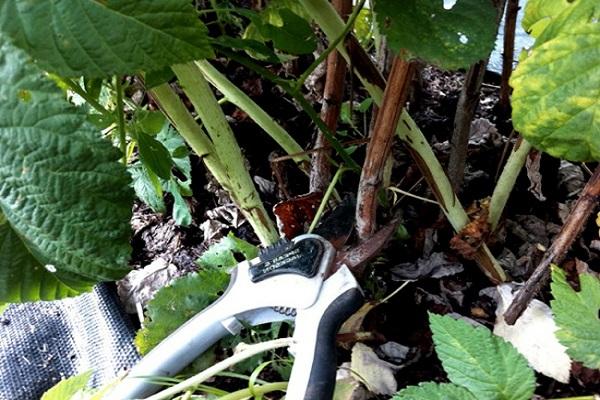
Top dressing, soil care and preparation for winter
It is recommended to feed raspberries three times a season. In the spring, it is worth using a combination of organic matter and mineral preparations. In summer, a complex composition based on nitrogen, phosphorus and potassium is introduced.
In early September, it is recommended to use mineral products. A composition based on wood ash and superphosphate is also perfect. In summer, during flowering, the soil around the bushes is covered with humus. After the end of flowering, a solution of chicken manure is introduced.
The soil should be systematically loosened and weeded. This is recommended after watering. It is recommended to cultivate the soil to a maximum depth of 6-7 centimeters.
Before wintering, you need to cut out all last year's shoots. This should be done at the root. Then the bed is covered with peat mulch. If the shoots have not been cut off, they are tied up, bent to the ground and insulated. To do this, it is permissible to use straw or spruce branches. A special covering material is also suitable.

Protecting raspberries from diseases and pests
Taganka is resistant to diseases and parasites. At the same time, sometimes she suffers from attacks of a raspberry beetle and the development of purple spotting. The raspberry beetle leads to the defeat of almost all fragments of the culture. He eats buds, leaves, inflorescences.
To cope with parasites, they are knocked down from the bushes onto a spread film and destroyed. From chemicals, it is allowed to use Kofidor or Spark.
Purple spotting is considered a dangerous pathology. It often occurs in June and is accompanied by the appearance of dark spots that are localized on the leaves and buds. If measures are not taken in time, the size of the spots increases. There is also a risk of cracks in the bark.
To avoid the development of pathology, it is recommended to avoid excessive planting density. Affected shoots should be cut out, capturing part of healthy tissue. Water the plant in moderation. Of the chemicals, it is permissible to use Fundazole or Bordeaux liquid.
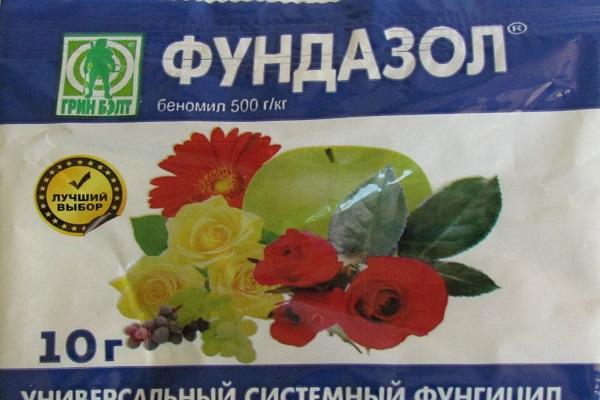
Another disease that raspberries of this variety may encounter is anthracnose. Pathology is difficult to treat. It is accompanied by the appearance of brown spots on the leaves. In conditions of high humidity, decay processes begin.
To prevent the development of pathology, planting raspberries should be kept clean and distant from other crops. Timely thinning of the bushes and the introduction of potassium and phosphorus are of no small importance. Of the chemicals used, Kuproxat or Oxyhom.
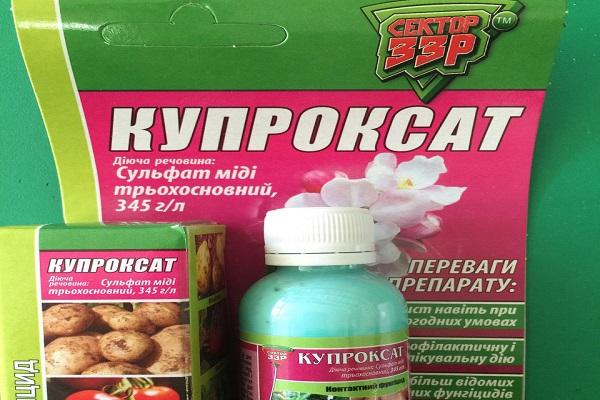
Breeding methods
Raspberries of this variety multiply easily. For this, a plant over 2 years old is suitable. It is recommended to take young shoots from him and plant them in a new place. Taganka saplings seem small. But they take root well and begin to grow quickly.
Healthy plants are suitable for reproduction of raspberries, which give a bountiful harvest. They should have lateral suckers that have a lignified trunk. It is important that the shoots grow at a distance of 30 centimeters from the main plant and have a height of 10-20 centimeters.
The shoots should be dug out with a lump of soil and transferred to a new place.
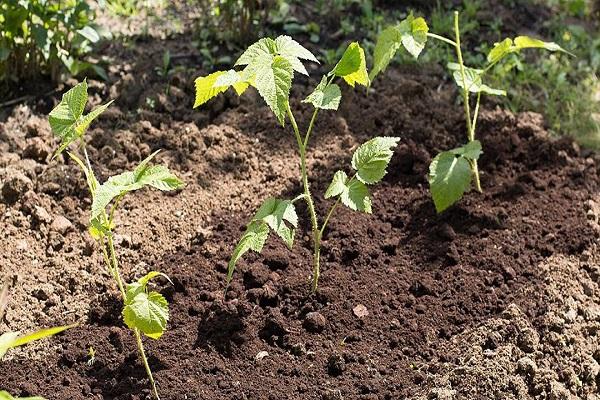
Harvesting and storage
Raspberries of this variety begin to bear fruit in early August. This process continues until mid-October. Fruit collection should be done very carefully. The berries crumple easily. Ripe fruits are easily separated from the stalk, therefore, efforts are not recommended.
Collected berries should be put in boxes or containers. Small plastic buckets are also suitable for this. It is best to lay the fruit in layers. They should be laid with raspberry or horseradish leaves.
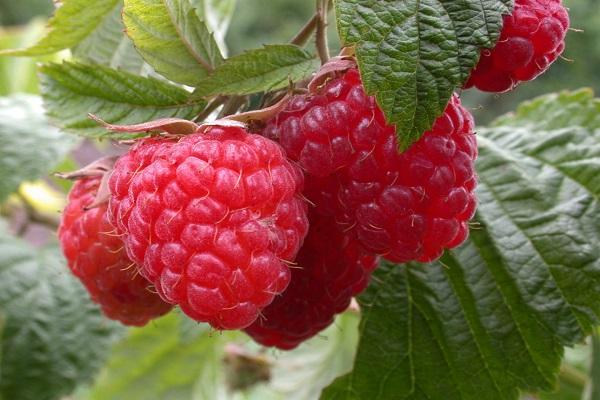
It is permissible to keep the fruits in the refrigerator for 5-6 days. If you want to store the berries for a longer period of time, they should be frozen in plastic containers.
Raspberries of this variety can be used for baking, wine, jam. If you grind the fruits with sugar, you can get an excellent mixture for the treatment of viral diseases. The leaves of the culture are great for brewing. As a result, you will be able to get a delicious and aromatic tea..
Raspberry Taganka is highly productive and bears tasty fruits. In order for the plant to develop normally and fully bear fruit, it is recommended to provide high-quality care. It should include timely watering, since moisture deficiency reduces the quality and quantity of the crop.
